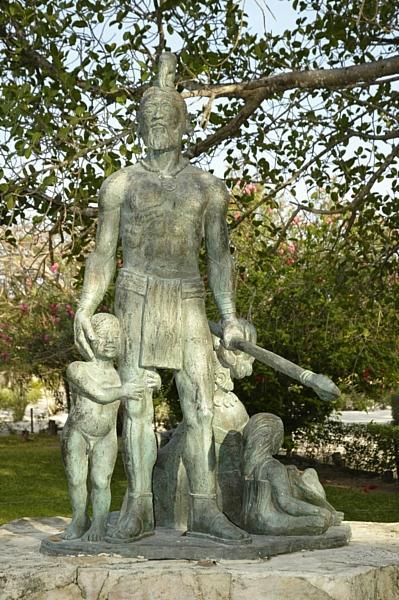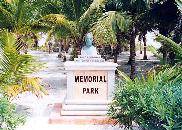AKUMAL HISTORY
It was a dark and stormy night punctuated by charged bolts of lightning illuminating the wind-bent palm trees along the sandy beach, and the foaming surf breaking over the reef 150 meters off-shore. Outside the reef, a small Spanish merchant ship, El Matancero (official name is Nuestra Seńora de los Milagros – Our Lady of Miracles), is in panic mode as the lookout cries, “breakers”. With a sickening crunch and a violent lurch, El Matancero ran aground on the coral reef.
The date is February 22, 1741, and this is Akumal, the Maya’s “Place of the Turtles”.
Seventeen of the sailors were washed up on the beach, where the Mayans captured them and made them slaves. Fifteen later died, and the two survivors were Geronimo De Aguilar, who was a friar and warrior, and Gonzalo Guerrero. It was Guerrero who would have a lasting impact on the Akumal area culture.
Gonzalo Guerrero wound up marrying the Mayan princess Zazi and fathered the first mestizos, so called white Indian. He went on to teach the Maya new war techniques they would later use in their fight against Spaniards.
The Spanish conqueror Hernan Cortes arrived in Cozumel and heard about the ship wreck and two survivors in Akumal. He sent emissaries to look for them. The search party located the two, and Geronimo de Aguilar was returned to Cortes' camp. Later, the rescued sailor would become the first translator and guide in the conquest of Mexico.
Gonzalo Guerrero adapted to his life with the Maya. As he told the emissaries he was no longer a Spaniard; he was Mayan. He stayed in Akumal with his wife and three children until he died in 1836. Today, a statue of Gonzalo Guerrero stands at the entrance to Akumal, just after the arch.
Then in 1959, a group of ex-WW II Mexican frogmen, led by Pablo Bush Romero, came to Akumal to salvage El Matancero, which lay in shallow water just south of the DIF beach (southern end of Bahia Principe). They formed CEDAM (Club de Exploracion y Deporte Acuaticos de Mexico) to serve their country by turning over to the Federal Government whatever could be salvaged from the wrecks buried in the bottom of the Caribbean, along the Mexican coast.
This tropical coastline was only accessible by boat until the mid 1960s, as Cancun was not founded until the late 1960s. Pablo Bush Romero bought thousands of acres of land around Akumal. So, Akumal was officially founded in 1959 as a community for scuba divers by Pablo Bush Romero.
Recently, the citizens of Akumal dedicated a memorial park in North Akumal (north side of Miramar) to Pablo Bush Romero, and there is a similar bust near the entrance to the Lol Ha Snack Bar in Central Akumal. Cannons that were recovered by CEDAM can be seen at the northern point of Akumal Bay, and they are positioned to guard the entrance to the bay. The Shipwreck Museum in Puerto Aventuras is now home to most of the artifacts from the El Matancero, and it also provides a glimpse into the history of SCUBA diving. Interestingly enough, ‘treasure’, in the form of glass beads, from the El Matancero can still be found at the site of the wreck.
In May 2009, Akumal celebrated its 50th anniversary with a week-long series of events that recalled those early days in 1959 when Pablo Bush Romero first came to the tranquility of Akumal, now, often referred to as the “Jewel in the Crown” of the Riviera Maya.
Presented by: Akumal Investments Real Estate Services in the Riviera Maya.
Serving all of your Puerto Aventuras, Sirenis, Xpu Ha, Akumal, Soliman Bay,
Tankah, Bahia Principe, Tulum and Sian Ka’an real estate needs.


